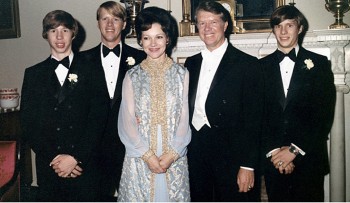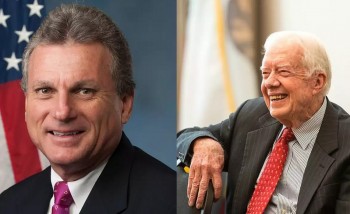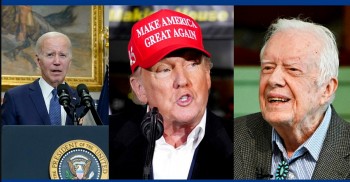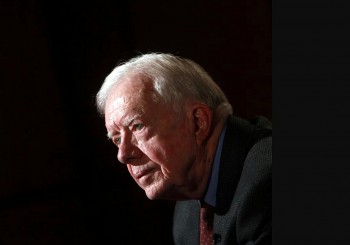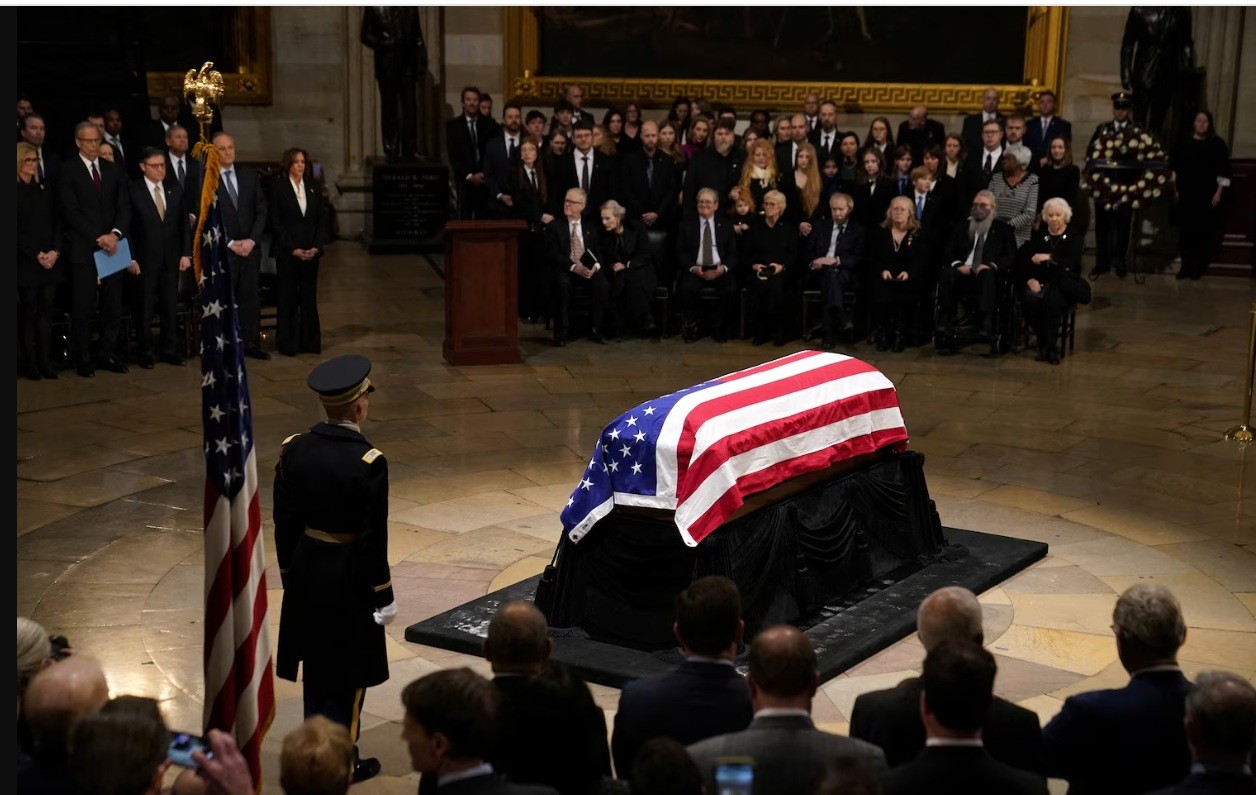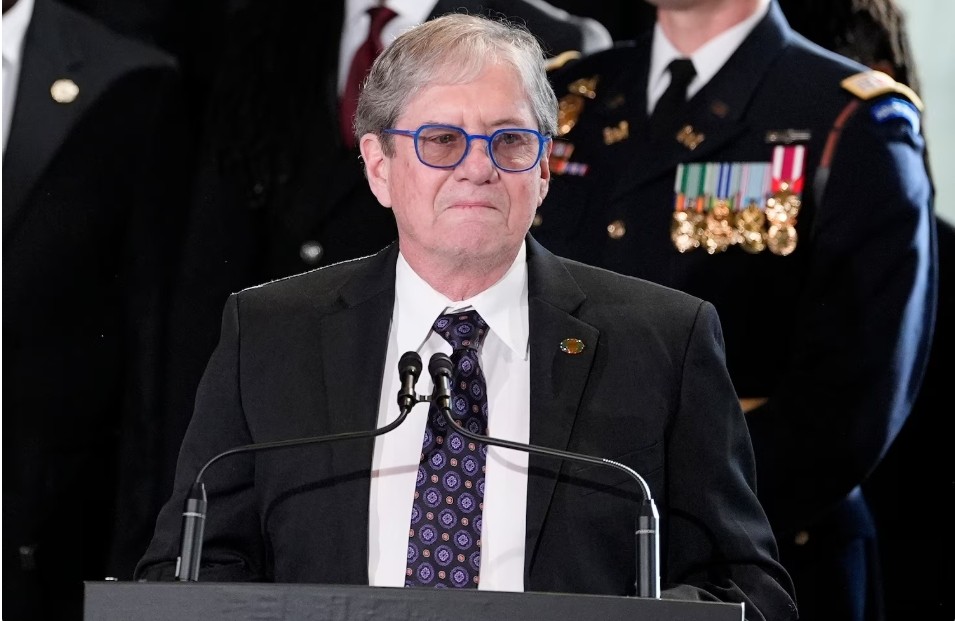What is a U.S. State Funeral: Will Jimmy Carter Lie in State
How will the state funeral begin?
The first stage of a state funeral is held in the former president's home state. In this case, Carter spent most of his life living in Plains, Georgia. The former president's casket will travel from his hometown to Atlanta via a motorcade, where he will first lie in repose in the Carter Center, his post-presidency foundation.
After a day or two in Atlanta, the former president will be flown to Washington, D.C. to continue the state funeral.
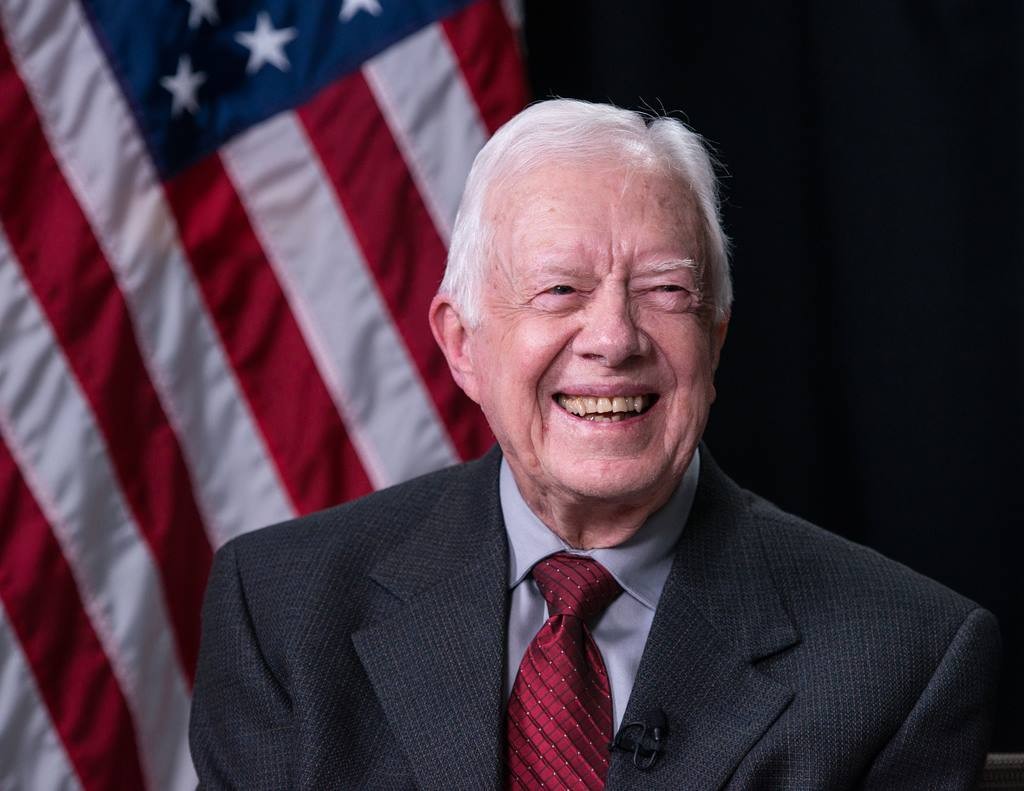 |
| Former President Jimmy Carter died at his home in Georgia on Sunday at the age of 100 |
Will former President Jimmy Carter lie in state?
The former president will lie in state at the U.S. Capitol for more than a day after being flown to the capital, where he will be greeted with a ceremony in the Capitol Rotunda.
After a few days, Carter's body will be moved again to the National Cathedral for a state funeral that is expected to last around an hour.
U.S. state funerals are elaborate and solemn ceremonies held to honor prominent individuals who have made significant contributions to the country. This article explores the history, process, traditions, and frequently asked questions (FAQs) about U.S. state funerals, providing a comprehensive guide for those interested in understanding this national tradition.
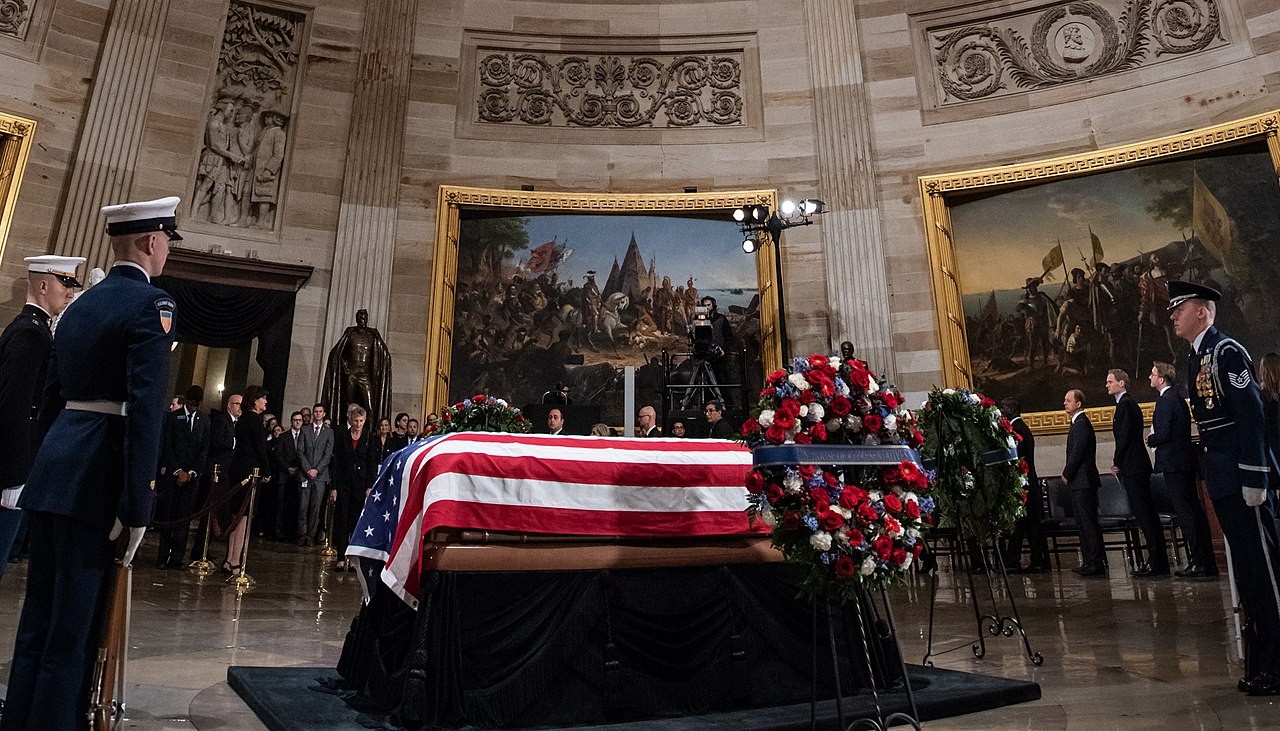 |
| President George H. W. Bush lying in state in the United States Capitol rotunda on December 3, 2018 |
What Is a U.S. State Funeral?
A U.S. state funeral is a nationally significant ceremony conducted to honor deceased presidents, prominent public officials, or other individuals of extraordinary national importance. These events are organized by the federal government and include military honors, religious services, and public viewings. State funerals serve as a way for the nation to mourn and celebrate the legacy of its most distinguished leaders.
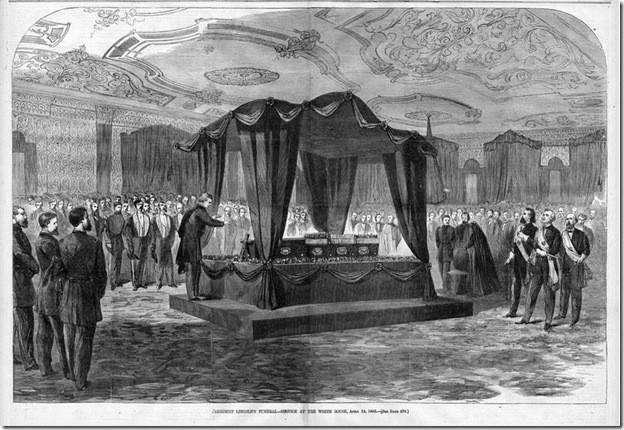 |
| A Harper’s Weekly drawing depicting the remains of Abraham Lincoln lying in repose in the East Room of the White House on April 18, 1865. |
Historical Overview
The First State Funeral
The first U.S. state funeral was held in 1799 for President George Washington. Although Washington’s funeral did not involve all the modern customs, it set the precedent for honoring national leaders with great reverence.
Notable State Funerals
Some of the most significant U.S. state funerals include:
-
Abraham Lincoln (1865): Lincoln’s funeral train traveled across several states, allowing thousands of Americans to pay their respects.
-
John F. Kennedy (1963): Marked by an iconic riderless horse and an eternal flame at his gravesite.
-
Ronald Reagan (2004): Reagan’s state funeral was attended by world leaders and broadcast globally.
-
George H.W. Bush (2018): Featured moving tributes and a train journey reminiscent of Lincoln’s.
| Who receives a state funeral? A state funeral is typically reserved for the deaths of former presidents, but can also be given to those designated by the president. So far, an official state funeral has only been given to former presidents, including Franklin D. Roosevelt, John F. Kennedy and George H. W. Bush, However, the JFT-NCR notes that funerals of "great magnificence" have been held in the United States since its founding, including for the death of former President George Washington, Thomas Jefferson and even Benjamin Franklin. |
Process and Traditions
Who Qualifies for a State Funeral?
State funerals are generally reserved for:
-
Sitting or former U.S. presidents
-
Presidents-elect
-
Other individuals designated by the president or Congress
Planning and Coordination
The funeral is meticulously planned by the Military District of Washington (MDW) in collaboration with the family of the deceased. The planning often includes:
-
Lying in State: The body is placed in the U.S. Capitol Rotunda, allowing the public to pay respects.
-
Funeral Procession: A solemn procession through Washington, D.C., often featuring military bands, a riderless horse, and a caisson.
-
Religious Service: Held at the Washington National Cathedral or another designated venue.
-
Burial: The final resting place is often a location of personal significance, such as the deceased’s hometown or Arlington National Cemetery.
Military Honors
Military honors are a key component of state funerals and may include:
-
A 21-gun salute
-
A military flyover
-
The playing of "Taps"
-
Pallbearers from all branches of the U.S. Armed Forces
Key Elements of a State Funeral
-
Proclamation by the President
The president typically issues a proclamation announcing the state funeral and ordering flags to be flown at half-staff.
-
National Mourning Period
A period of national mourning is declared, often lasting 7 to 30 days.
-
Lying in State
The body lies in the Capitol Rotunda, where thousands of citizens line up to pay their respects.
-
Religious and Memorial Services
Services reflect the personal beliefs of the deceased and are attended by political leaders, foreign dignitaries, and family members.
-
Burial Ceremony
The final ceremony often includes additional military honors and a private service for family and close friends.
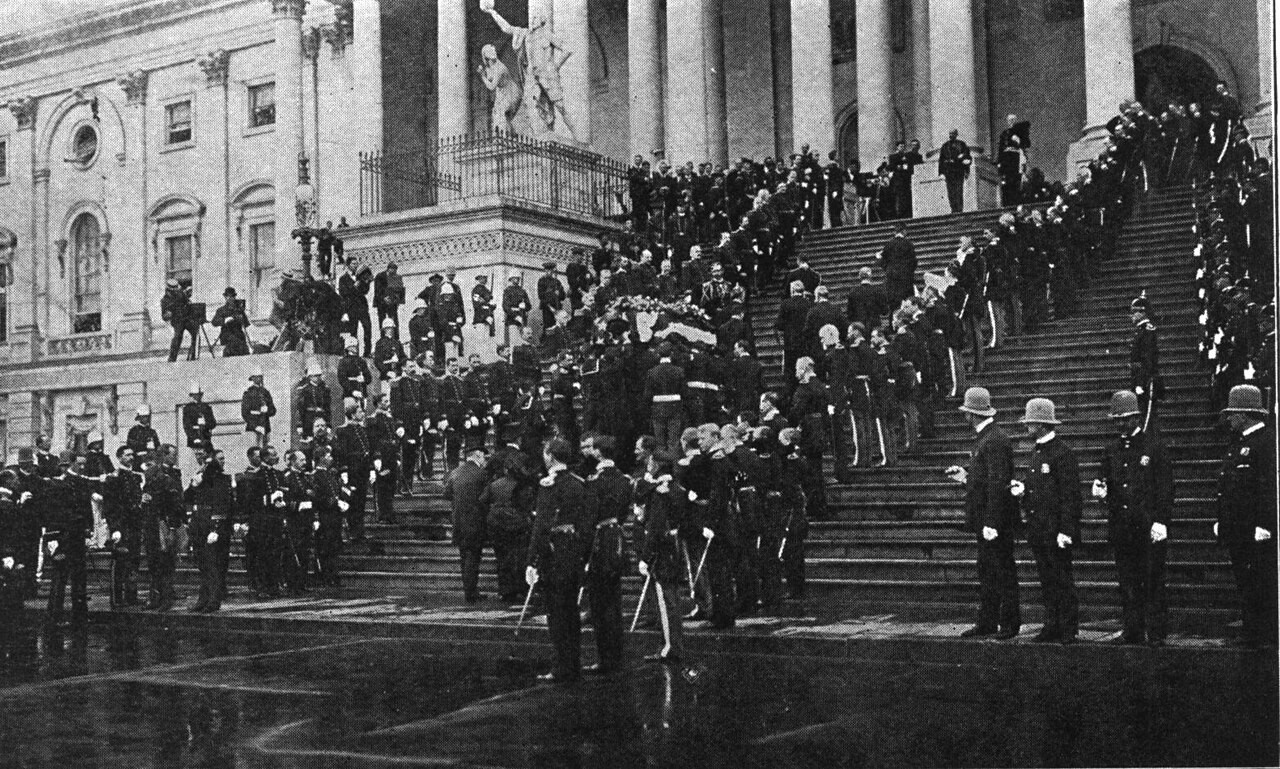 |
| A guard of honor carrying the casket of William McKinley up the center steps of the Capitol for the lying in state on September 17, 1901 |
FAQs About U.S. State Funerals
1. How long does a state funeral last?
State funerals typically last several days, encompassing the lying in state, funeral services, and burial ceremonies.
2. Who decides if a state funeral is held?
The decision is made by the sitting president in consultation with the family of the deceased.
3. Can the public attend a state funeral?
Yes, parts of the state funeral, such as the lying in state and public processions, are open to the public.
4. What is a "lying in state"?
Lying in state refers to the tradition of placing the deceased’s body in the U.S. Capitol Rotunda for public viewing.
5. What is the significance of the riderless horse?
The riderless horse, with boots reversed in the stirrups, symbolizes a fallen leader and dates back to ancient military traditions.
6. Are all U.S. presidents given state funerals?
Not necessarily. While most presidents are offered state funerals, the decision ultimately rests with the deceased’s family.
7. Who was the last person to receive a state funeral?
The most recent U.S. state funeral was for George H.W. Bush in December 2018.
8. What role does the military play in state funerals?
The military organizes and executes key aspects of the funeral, including processions, pallbearing, and ceremonial honors.
9. How are foreign dignitaries involved?
Foreign leaders often attend state funerals to pay their respects, reflecting the international significance of the honoree.
10. Are state funerals broadcast?
Yes, state funerals are televised and livestreamed, allowing the nation and the world to participate in honoring the deceased.
| U.S. state funerals are a testament to the nation’s respect for its leaders and heroes. These ceremonies, steeped in tradition and grandeur, offer a way for Americans to collectively mourn and reflect on the legacies of those who have shaped the country’s history. |

